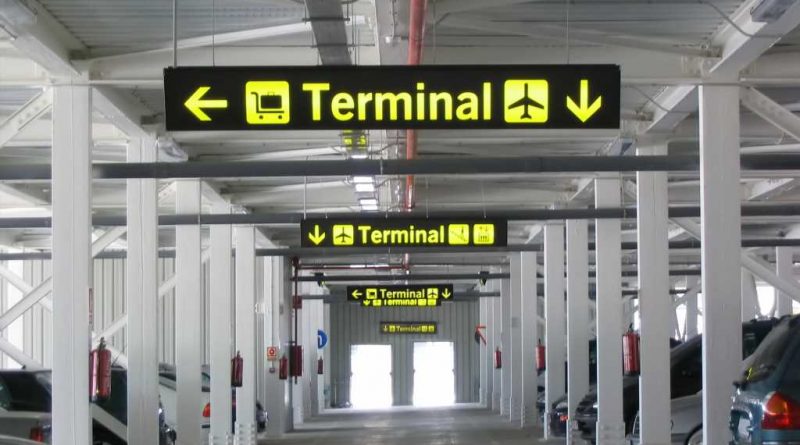As travel comes back, US airport parking makes a slow recovery
The COVID-19 pandemic has cost North American airports $23.3 billion, significantly setting back previously forecasted stable growth prospects, according to Airports Council International – North America.
Related: Prepare yourself: 12 unexpected but significant ways travel has changed
While aeronautical revenues are under pressure, the cost of operations remain unchanged since airports can’t close or relocate terminals during the outbreak. Plus, 90% of nonaeronautical revenue is passenger-dependent, based on ACI-NA research. As passenger activity level decreases, nonaeronautical revenue, including parking, also decreased proportionally.
As a result, airports were forced to cut the number of available parking spaces and slash prices. As an example, hourly parking next to Baltimore/Washington International Thurgood Marshall Airport (BWI) went from $22 to $12.
As travel slowly begins to resume, and more travelers are driving and parking at airports, TPG took a look at four facilities across the country to see how hard hit they were by a sharp decrease in demand for available spaces and what travelers can expect going forward.
New to The Points Guy? Sign up for our daily newsletter and check out our beginner’s guide.
In This Post
Hartsfield-Jackson Atlanta International Airport (ATL)
Despite falling to the second-busiest airport by passengers served (the top airport is now China’s Guangzhou Baiyun International Airport), Hartsfield-Jackson (ATL) is still a major mover of passengers. In calendar year 2019, parking revenue was $151.3 million. A year later, revenue had plummeted to $55.7 million.
“As more people become vaccinated and people feel more comfortable traveling, we are starting to see a significant uptick in passengers,” said Katie Stanciel, Hartsfield-Jackson’s airport director of parking operations.
Load Error
The airport recently opened portions of its new ATL West parking deck, with 2,250 new spaces at a rate of $14 per day in a well-lit, secure and attractive facility, said Stanciel. “When fully opened this summer, the seven-level deck will have more than 5,000 spaces available for customers,” she said.
With more than 5,000 new spaces, the ATL West parking deck is designed to be completely automated and efficient, with updated signage communicating the number of available spaces to customers, said Stanciel. “License plate readers, PeachPass holders, and online reservation users will enjoy contactless, easy access to and from the lot.”
As of May 2021, there are 27,718 parking spaces available now at Hartsfield-Jackson, and the rates vary depending on the parking location, said Stanciel. For the most updated parking information, travelers should visit the airport’s website.
Related: Atlanta knocked out as world’s busiest airport as pandemic shuffles 2020 rankings
San Francisco International Airport (SFO)
The Bay Area’s largest airport also saw parking revenue take a nosedive, from $92.9 million in 2019 to $32.6 million in 2020, said spokesman Doug Yakel. Available parking broke down to:
- Domestic Hourly/Daily Garage – 5,030 spaces
- International Hourly/Daily Garage A – 1.601 spaces
- International Hourly/Daily Garage G – 1,442 spaces
- ParkFast Hourly/Daily Semi-Private Section – 53 spaces
- ParkValet Valet Parking – 150 spaces
- Long-Term Parking – 7,207 spaces
After the pandemic hit, the airport decided to decommission its valet and long-term parking lots, converting the latter into a mass vaccination center. Parking prices remained the same: $36 a day for hourly/daily lots and $40 a day for the ParkFast hourly/daily section.
SFO launched an online booking system in October 2020 that offered an $18-per-day online-only special parking promotional offer. “This online booking system with corresponding promotions would have been implemented even if the pandemic did not occur,” Yakel noted.
The airport is currently offering a special parking promotion: Customers who book for long-term parking receive half a day of free parking for every one day booked, starting on the second day. “For example, if a customer books seven days, they receive three days free,” said Yakel. “There are no caps to the number of free days customers can earn, so the longer the stay, the less paid per day.”
The airport’s long-term parking lot reopened on May 5, and the online booking system will offer the same special promotional offers, said Yakel. “We also extended our AirTrain people mover system to long-term parking, making it easier to get to,” said Yakel.
Looking ahead, SFO hopes to be at 65% to 75% of pre-pandemic parking volumes by the end of 2021, said Yakel.
Related: From LA to San Francisco: What it’s like driving one of America’s best road trips
Baltimore/Washington International Thurgood Marshall Airport (BWI)
In its fiscal year 2019, BWI Airport earned $47.8 million in parking revenue. That dropped to $29.8 million in FY 2020, said spokesman Jonathan Dean.
Pre-pandemic, BWI Airport has nearly 25,000 parking spaces broken down accordingly:
- Long Term A — 5,500 spaces at $8 a day
- Long Term B — 4,600 spaces at $8 a day
- Express Parking — 1,400 spaces at $10 a day
- Daily Garage — 8,400 spaces at $12 a day
- Hourly Garage– 5,000 spaces at $22 a day
When COVID-19 hit, the Long Term A, Long Term B, and Express Parking were temporarily closed, said spokesman Jonathan Dean. This left BWI with 13,400 spaces in the daily and hourly garages, he added.
“Special rates were put in place at that time. The Hourly Garage went to $12 per day and Daily Garage went to $8 per day,” said Dean. “The special rates were put in place because demand significantly decreased, as well as to give customers the convenience of parking closer to the airport terminal.”
BWI’s Long Term A reopened on April 1, 2021. “That was an acceleration of the plan, which had been to reopen Long Term A in July. A strong rebound in passenger traffic this spring led to the reopening,” said Dean. Currently, there are 18,900 total spaces open for public parking.
When Long Term A opened, it stayed at its usual rate of $8 per day. “On April 15, 2021, the Daily Garage rate moved to $10 per day and the Hourly Garage rate moved to $16 per day, said Dean. “Resumption of the regular rates for the Daily Garage ($12 per day) and the Hourly Garage ($22 per day) is currently scheduled for Oct. 1.”
Related: Road trip! 5 cities to check out from Baltimore
Albuquerque International Sunport (ABQ)
The airport watched its 2019 parking revenue go from $10.5 million in 2019 down to $3.9 million in 2020, said spokesman Jonathan Small.
Albuquerque Sunport (ABQ) has 3,390 spaces in a four-level parking garage, 450 spaces in the Premium Economy Lot and 352 spaces in the Basic Economy Lot. Unlike other airports, ABQ did not cut any parking spaces, nor did it reduce prices. The Basic Economy Lot is $7 a day, the Premium Economy Lot is $9 a day and the garage maximum daily rate is $12 a day.
“Due to recent increases in passenger traffic, our parking revenue has already increased by 39% from February 2021 to March 2021,” said Small. “During spring break, our Premium Economy Lot was up to 95% full, which was really encouraging to see.”
Forecasting is still very difficult these days, said Small. “But we see our parking program finishing fairly strong this year,” he said. “We won’t be back to pre-pandemic levels, but as long as people continue to get vaccinated, COVID-19 cases continue to decrease and air travel trends continue to improve, we hope to see our program back to 70% of our yearly revenue by the end of 2021.”
Bottom line
Now that travelers are getting vaccinated, many of them are taking to the skies. In March 2021, the Transportation Security Administration (TSA) screened more than 1 million passengers for the first time since the pandemic began. This compares to 2019’s spring travel season — which hit more than 2.5 million people per day screened.
Air travel is increasing and hotels are seeing bookings rise. So before going to the airport, check on the parking section of its website to ensure that there’s a spot waiting for you before take-off.
Featured photo by Marlee/Shutterstock
SPONSORED: With states reopening, enjoying a meal from a restaurant no longer just means curbside pickup.
And when you do spend on dining, you should use a credit card that will maximize your rewards and potentially even score special discounts. Thanks to temporary card bonuses and changes due to coronavirus, you may even be able to score a meal at your favorite restaurant for free.
These are the best credit cards for dining out, taking out, and ordering in to maximize every meal purchase.
—
Editorial Disclaimer: Opinions expressed here are the author’s alone, not those of any bank, credit card issuer, airlines or hotel chain, and have not been reviewed, approved or otherwise endorsed by any of these entities.
Source: Read Full Article




